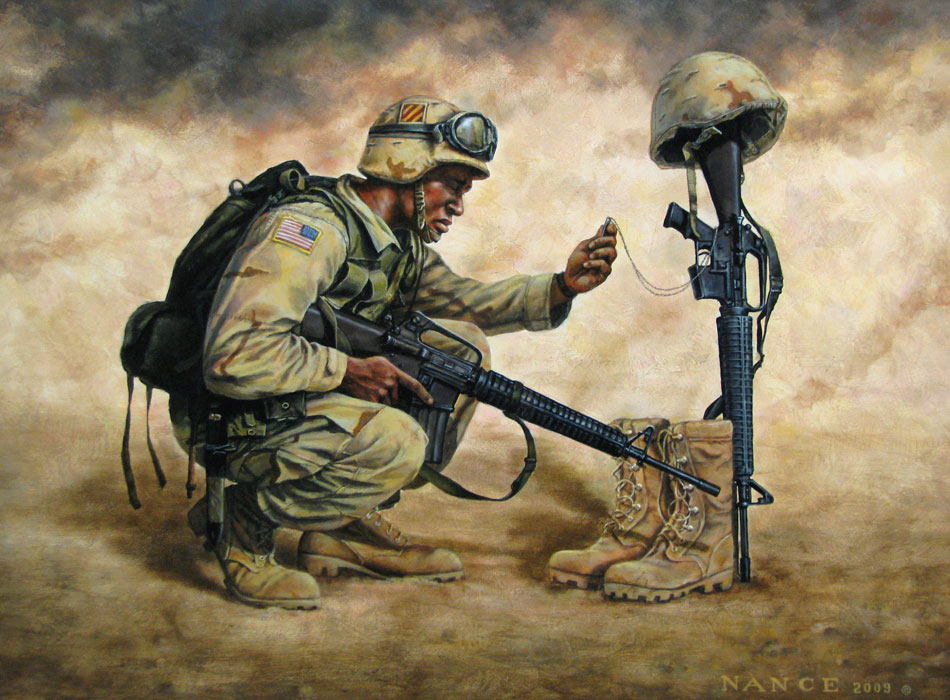In the previous post, Art of War: Propaganda, we briefly spoke about a scholarly article that delves into the topic of political art and propaganda. In this post we will look deeper at that article by highlighting specific statements in the article here.
Wilcott first states that “Wartime art is not completely stripped of artistic beauty; instead it engenders a different sensibility: beauty in the human condition, beauty in human compassion, and a continued sense of hope despite tragedy.” She notes that WWII is an exceptional example of the genre of wartime art.
“Lanker and Newnham have observed that “no single event in the history of mankind was more documented through art while it happened than World War II.”1 Throughout World War II commercial art, in addition to radio reports and newsreels, remained a constant informational resource to the public by informing the home front of the evolving events through posters, newspaper cartoons, and comic books,” Wilcott notes.
Wilcott also notes the importance that wartime artists had/have in society. She states, “The creation of combat artwork based on firsthand observations and personal experiences became essential in offering a sense of reality and humanity to the war that was previously unavailable. These artists whether commissioned or not produced sketches and paintings that were directly influenced by their personal and emotional experiences overseas.”
In her conclusion Wilcott talks about the complexity of propaganda and the equal complexity of interpretation of art.
“All art, even war art, benefits the public because there is no correct, singular interpretation. Each piece of artwork will engender a unique emotional response in each individual. These numerous interpretations and perspectives made art during World War II so valuable. Most importantly, artwork developed by combat artists still provides a firsthand emotional and personal connection to the events of the war that most historical textbooks are unable to convey,” Wilcott said.
But Wilcott also discusses the importance of art and the discussion that stems from political art.
“Discussions of commercial art, especially propaganda, helped to show the prominence and utility of art during wartime society. One intention was to garner support and loyalty for the war effort through posters, comics, and cartoons emphasizing to citizens their wartime responsibilities and duties,” Wilcott said. “However, not all propaganda was used for nationalistic purposes. Analyzing the latent motivations behind the artwork provided new historical context and allowed viewers a more complex picture of war.”
While there is no way to highlight all of the content in Wilcott’s article, these chosen quotes highlight the insight that the article holds in regards to political art. More information and further reading into Wilcott’s article can be done here.

Image obtained here.